My 1914/3 Overdate Story From 2006
Some things about the 14/3 Buff Overdate have changed since I wrote this, but this origin story still has "meat" IMHOP.
So here it is.....................
The story of the newly discovered (in 1996) 1914/3 Buffalo Nickel overdate to some might be viewed as a “Fairy
Tale”. The Fairy Tale moniker might be apt, in the sense that a percentage of seasoned collectors look at the
discovery and subsequent value of specimens with a certain amount of dis-belief.
If you view this overdate in comparison to the 1918/7-D, it is understandable that a perception like that would be
justified.
There is no question that the 1914 and 1918 overdates are what they are: Overdates. The two dates, however,
should not be considered identical in all respects. They are second-cousins, produced at different stages of the
die making process. Actually, in respect to blunders, the 1914/3 wins hands-down between the two!
Philly Phollies in 1913
From October till the end of the year, every year, the Mint was very busy producing dies for the remainder of the
current year, as well as the upcoming New Year.
Both were done, side by side, at the same time. That in itself is a recipe for mistakes.
The essential difference between the 1914/3 and the 1918/7 was that the Overdates were produced at different
stages in the die making process. The 1914/3 was by far the bigger mistake. A Working Hub was overdated.
Working Hubs are used to produce Working Dies. A lot of them! Working Dies were wrongly impressed with
the overdated Hub. The 1918/7 is unique in that only one Working Die was overdated. The 1914/3 happened
one step earlier in the die making process, the result being that multiple-overdated dies had been produced.
PULL THE DIE!....now what?
The horrendous mistake was eventually discovered after an undetermined amount of Working Dies had been
produced. It is estimated that 4 to 5, maybe 6, were created. The overdated Hub was pulled and destroyed, but
the damage had already been done. The die making process involves numerous steps, and is very labor intensive.
It cost The Mint real money in terms of wages, material, fuel for the annealing furnaces, and lost time to make
good a mistake.
The solution to this blunder was carried out in the following manner:
The overdated Working Dies were re-processed by grinding down and polishing away as much of the overdate as
was possible. Each die was identified, and re-worked to remove traces of the underlying “3” in the last numeral
of the date. That would re-coup the labor involved in their creation.
The Mint did this with varying amounts of success. Every Working Die that was discovered to have been
overdated subsequently received abrasion treatment to remove as much as possible of the underlying “3”. The
abraded and re-polished dies were then sent onward to the production stage (the actual coining of Nickels).
A natural chain of events ensued. Some of the re-conditioned dies were shipped by Express Messenger Service
to the Branch Mints in Denver and San Francisco for the coining of 1914 dated Buffalo Nickels, and some
remained in Philadelphia for coining there.
Their creation, circulation, and anonymity lasted until 1996........an astounding 82 years later!
The Medina Specimen is Discovered
Unlike this Overdates cousin, the 1918/7-D, which features a very prominent and untouched date, none will
show that bold feature. However, some very early die-state and high-grade specimens do exhibit an Overdate
that can be seen with the naked eye.
They all were coined and released into general circulation Nationwide with the above mentioned abrading. Given
the Buffalo Nickels’ often weak strike, coupled with the all too common clash marks and strike doubling, all
were dismissed as being afflicted with any number of the above maladies.
In 1996, Bill Fivaz (of Cherrypickers fame) sponsored a contest through CONECA in which a $100.00 prize
would be rewarded for finding a new and unknown overdated coin. R.A. Medina, from San Antonio, Texas
submitted the 1914-P Buffalo Nickel as his entry into the Contest.
It was graded Very Fine, struck from worn dies, and immediately caught the fancy of the Contest Sponsors. It
quickly made the rounds from one expert to the next, and was determined to be a new Overdate.
But......hesitant to officially confirm the coin, it was agreed to wait for someone to submit a higher-grade
specimen for analysis.
Several months later, another San Antoinian, Roger Alexander, submitted a higher-grade 1914-P coin struck
from an earlier die-state
After examining Alexander’s coin, the new Overdate was confirmed.
The 1914/3-P Buffalo Nickel began appearing in price guides, and was recognized by the major grading services
who would slab qualified specimens in a holder with the 1914/3 designation on it.
Now the Fun Begins
It was either still unknown, or was not thought to be the case to everyone involved in the Hobby from the outset
that the 1914/3 might have been manufactured from more than one die.
A specific and very rigid set of variables had to exist for any specimen to qualify for slabbing at that very early
stage.
I personally had one rejected by PCGS that I had sent with a local coin dealer in my area to The Long Beach
show in California. It was an EF specimen that I “cherried” shortly after hearing of the discovery.
PCGS told the dealer that while it looked like it possessed the diagnostic “notch” at the top and to the right of
the “4” in the date, it did not have all the diagnostics needed to holder the coin.
I began to understand why some individuals called this Overdate a “fairy tale”. I was so disillusioned and
disgusted with the pronouncement that I took the coin home and threw it into a box of spares and “junk” that I
had accumulated over the years.
That was then. This is now.
Today it probably would be holdered.........but for the life of me, I can no longer find the coin. I have absolutely
no idea what happened to it!
A 1914/3-S is Discovered
In 1997, Thomas K. Delorey sent a San Francisco minted coin “around the horn” that displayed diagnostics
hinting of the Overdate. The notch at the top of the “4” was there, but was considerably diminished compared to
the P Mint specimen.
It now became apparent that more than one die existed, meaning that a Working Hub was the culprit. There was
more than one Overdated die floating around.
The Final Piece of the Puzzle
1914/3-D
The challenge started by Bill Fivaz was actually ended by him late in 2000.
With the knowledge that multiple dies existed for this Overdate, and no specimen discovered from the Denver
Mint so far, Bill found an EF specimen that looked right. The Denver coin was less obvious and displayed fewer
details of an Overdate, but it, and a second specimen grading VF were declared as the Denver Overdate after
“making the rounds” to die specialists.
The Denver coins, both struck from the same Obverse die, sport a long die crack from the left rim through the
Indians head. It can easily be seen with a small amount of magnification.
This single Obverse die was paired with two different reverses during its production life. The “D” mintmark on
one specimen is very close to the “C” of Cents. It stands straight, with no tilt to it.
The second specimen displays a “D” which is tilted slightly to the left and is so close the “C” in “CENTS” that it
looks imbedded.
Summary
Six or more dies. Specimens from all three Mints. 82 years in hiding.
What’s not to like?
1) The Mint caught this one. To save production costs, each offending die was re-worked to remove traces of
the “3”. Higher grade specimens seldom seen by the general public, however, are reported to display a much
better Overdate than we regular folks can see. These “high-end” specimens make the rounds being sold and
traded between Dealers. “Bang for the Buck” being the operative words here, A good percentage of collectors
feel that the amount of Overdate present does not justify the cost of obtaining a specimen.
2) Should it be included in Albums? Yes, it should. It is what it is. It should only be included as an optional
slot though, for those of us who do not want to ante up the cost to display it.
3) This specimen hid so well for 82 years....and given the extra fragility of all the dates on the very early Buffalo
Nickels......is mostly lost to the ravages of wear and have been sent to “Dateless Heaven”........the mythical place
I envision as existing somewhere in Montana where the Buffs did roam at one time........their numbers so large
herds often covered an entire State!
Pete
Comments
Pete, Thanks for the Great write-up I like your explanation on the working dies and Hubing that took place, I believe that another event took place in 1917 with a digit under the "7". A Gentleman at one of the ANA shows was trying to convince People that there was a raised area under the 7 that looked like another digit, I think it looks like the number 9. and seeing that it was the beginning of WW1, I can see that the Mint didn't want to waste the material and time spent on making another master die, maybe time will tell.
Excellent write up and information! Every few years I come across a 1914 that makes me pause and research this variety again.
It gets hard to ignore the upper right corner of the 3 poking out at the top right of the 4, and the horizontal remnants to the left top along with die scratches.
I saw one recently that matched several points on plate coins (examples without the obvious throat clash)
https://www.autismforums.com/media/albums/acrylic-colors-by-rocco.291/
Thanks for the writeup Pete.
I would like to respectfully offer my theory as to how multiple working dies came to be overdated.
As we know, working dies back then started out with a blank face that was a shallow raised cone. I assume that the Mint had learned from trial and error over the decades that this helped the design to form completely during the multi-step hubbing process.
The steel working hub had the design of the finished coin in the normal raised relief of the finished coin. Prior to 1907 the working hubs did not have a date. During 1907 the St. Gaudens $20 and $10 hubs were made with dates. During 1908 the hubs for the other denominations were gradually changed to having dates.
When the raised working hub was brought down onto the shallow cone of the heat-softened blank working die, the point of the cone made first contact with the hub. The design spread out from there until the steel in the working die became so work hardened that the hub could sink into it no further. We are not sure what percentage of the total area of the design could be formed by that first hubbing, which no doubt varied with the diameter and relief of the design, but it had to be only some central portion of the total design.
The work-hardened working die would then be annealed, by heating it in an oven to a certain temperature range, and then setting it aside to cool slowly, probably overnight. Since heating the oven costs you fuel or electricity, it is cost effective to give many working dies their first impression and then heating the batch in the oven.
The next working day you take the now re-softened incomplete dies back to the hubbing press and repeat the process, being careful to align the die and the hub to avoid doubled designs. At some point in this process, and again we do not know how many hubbing this took, the design would show roughly 80-90% of the area of the design, lacking only that part of the design closest to the rim plus the rim itself.
Take a look at a high grade 1916 Doubled Die Obverse Nickel. The word LIBERTY, being concentric to the rim, fell outside that area that was incompletely formed, and so it was not doubled by the next hubbing which was not properly aligned. However, the date was not concentric to the rim. The first 1 was closest to the rim, so only the very top of that 1 was doubled by the next hubbing. The 9 was further from the rim, and the second 1 further still, and the 6 further still, so that more and more of each digit shows from the prior hubbing, but the bottoms are missing along an invisible line concentric inwards from the rim. The 1919 DDO Dime die shows doubling on IN GOD WE TRUST that likewise is incomplete along an invisible line concentric inwards from the rim.
Now assume a batch of 1913 Working dies begun late in the year that had been hubbed outwards to the point that some or all showed just the tops of the 3's, some perhaps just a bit stronger than the others, as probably happened on every large batch of dies. Now let us assume that the Coiner advises the Engraving Department that projected needs for 1913-dated obverse nickel dies have changed, and that the supply he has on hand should be sufficient. The Engraving Department, rather than waste the labor and materials invested in this batch of barely-dated dies, could easily have decided to finish the entire batch with the 1914-dated hub and just touch up the ones that showed remnants of the 3.
I do not believe that a 1914/3-dated working hub was plausible.
TD
Thanks for the replies.
My article was penned in 2006, and I have learned a whole lot more in the intervening years thanks to all of the posts from my "roomies".
This place has been centrally important to my continuing study of Numismatics.
Pete
@BuffaloIronTail @CaptHenway
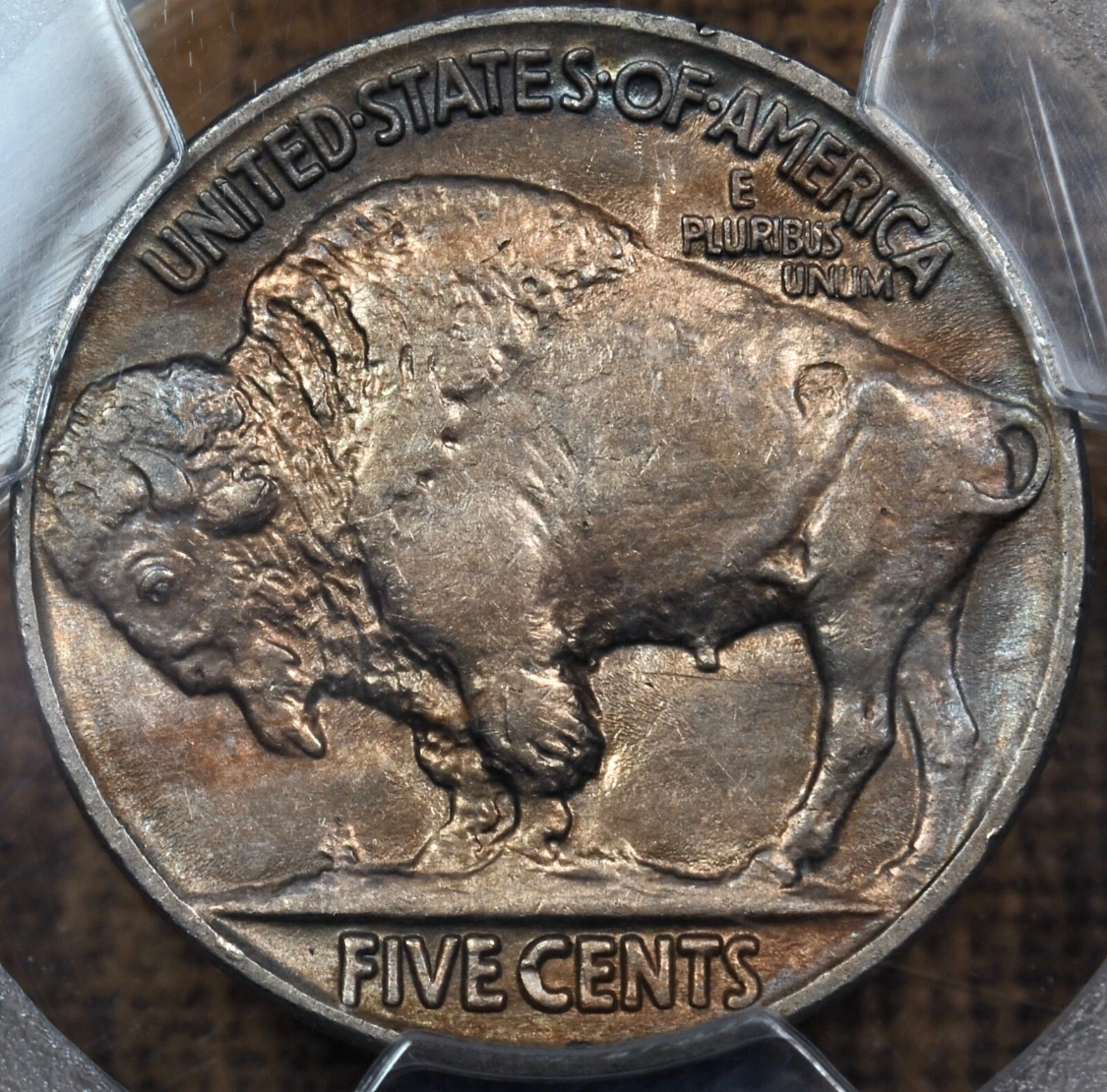
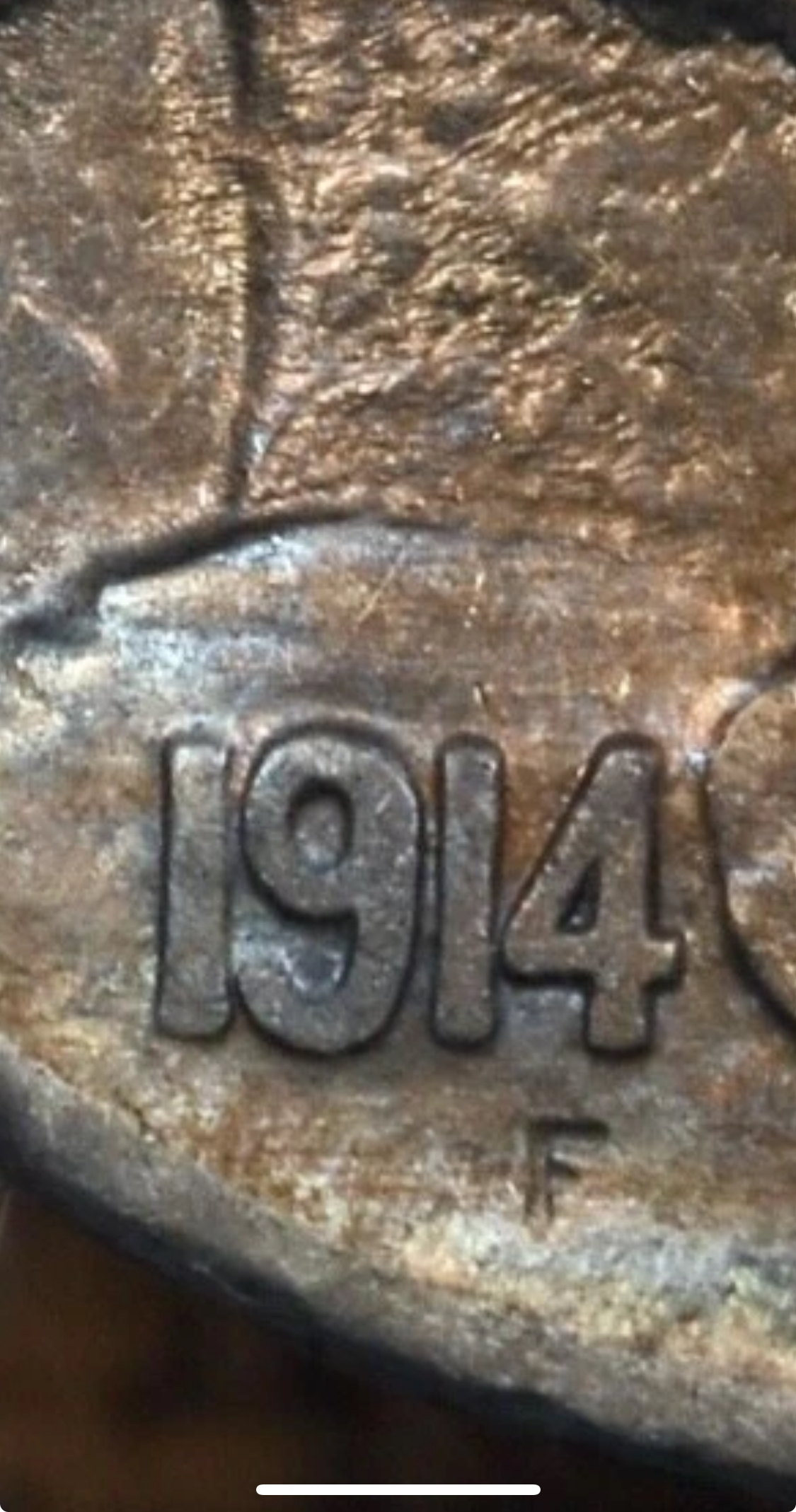
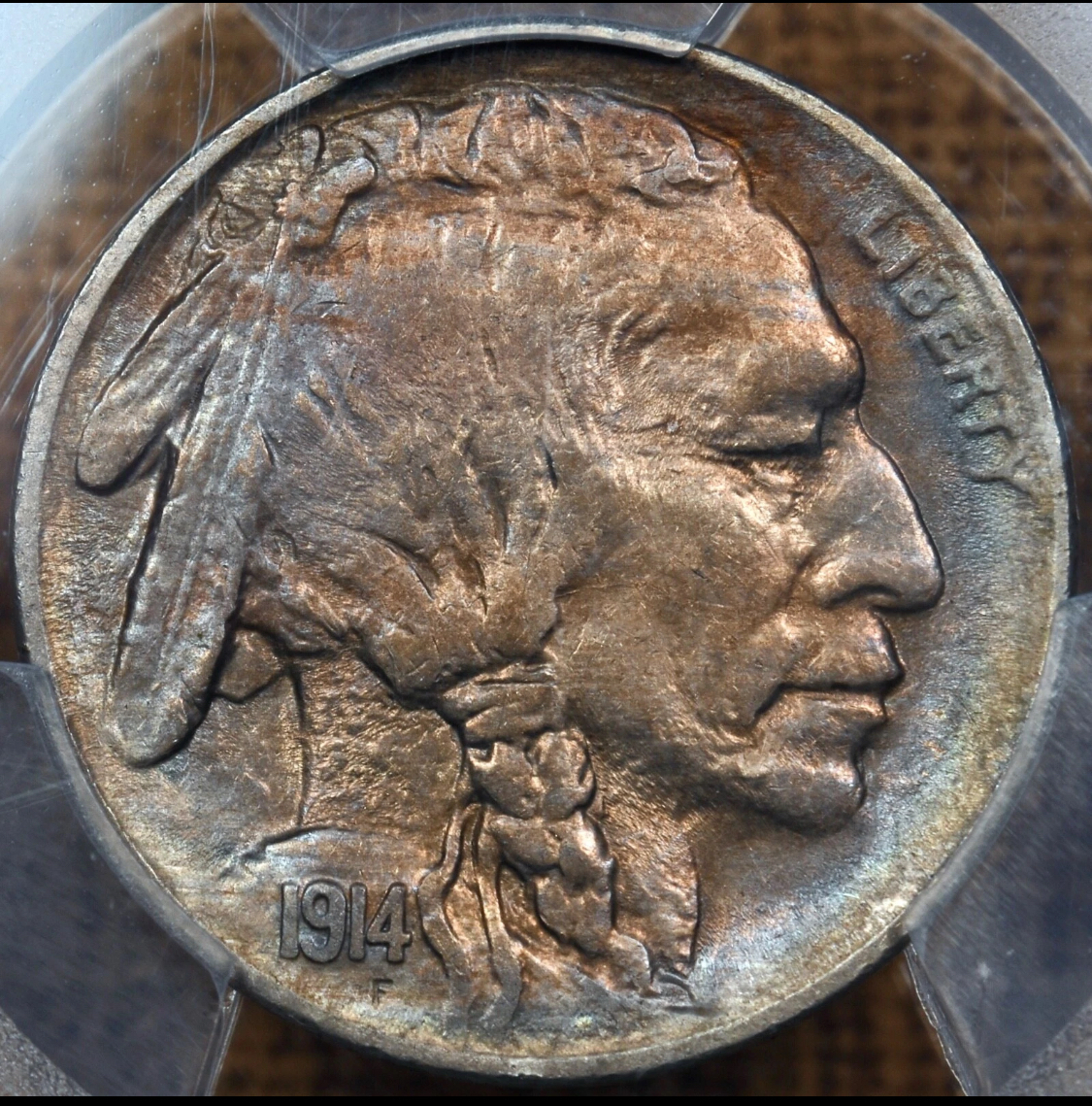
Any opinions on this? Comparing to coinfacts examples without obvious die clash marks lots of points match, like the 4 area, the “pimple” on the back of the neck midway up…
I got this for the color, but a cherry pick would be epic!
Coinfacts pics below (examples without obvious clash)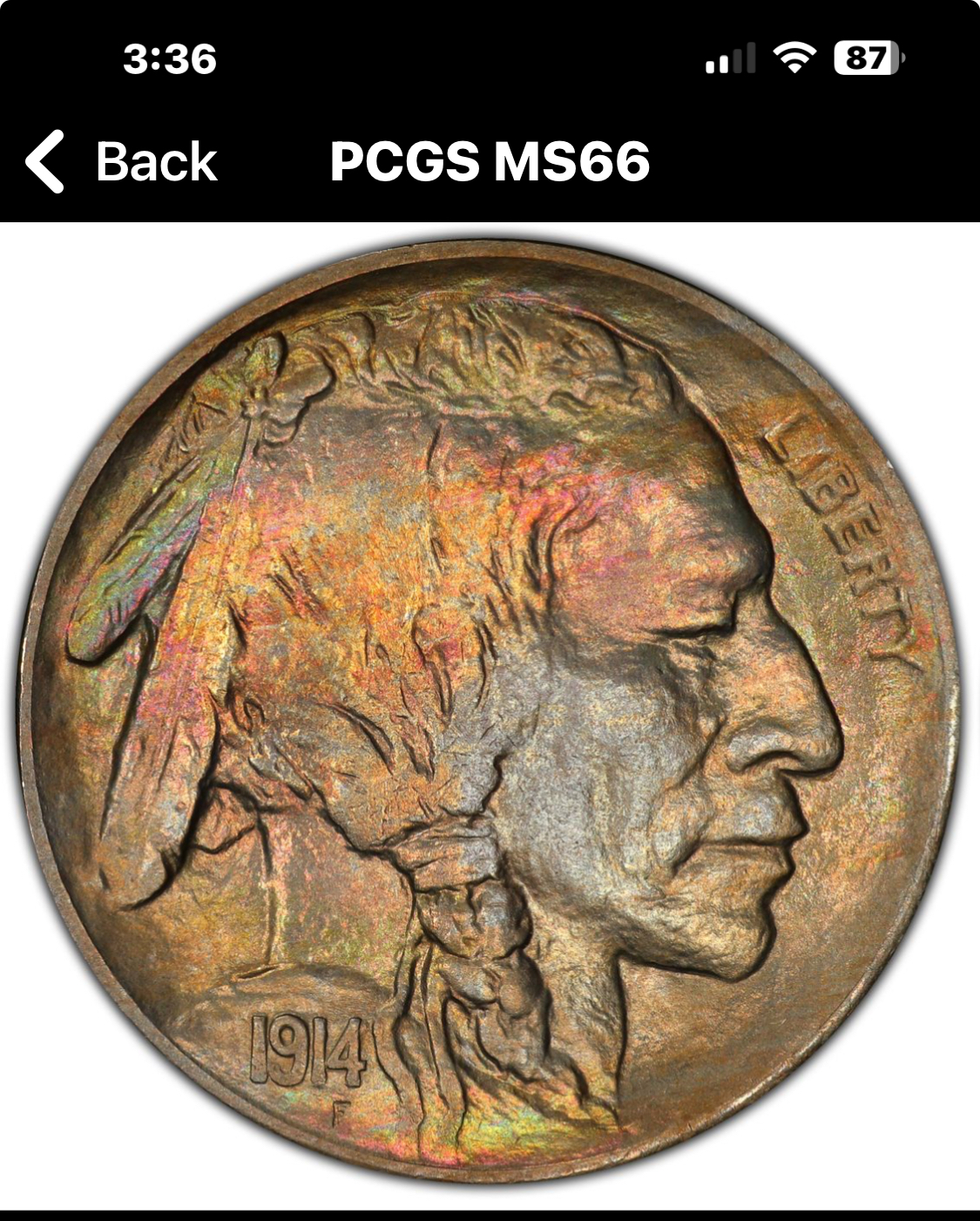
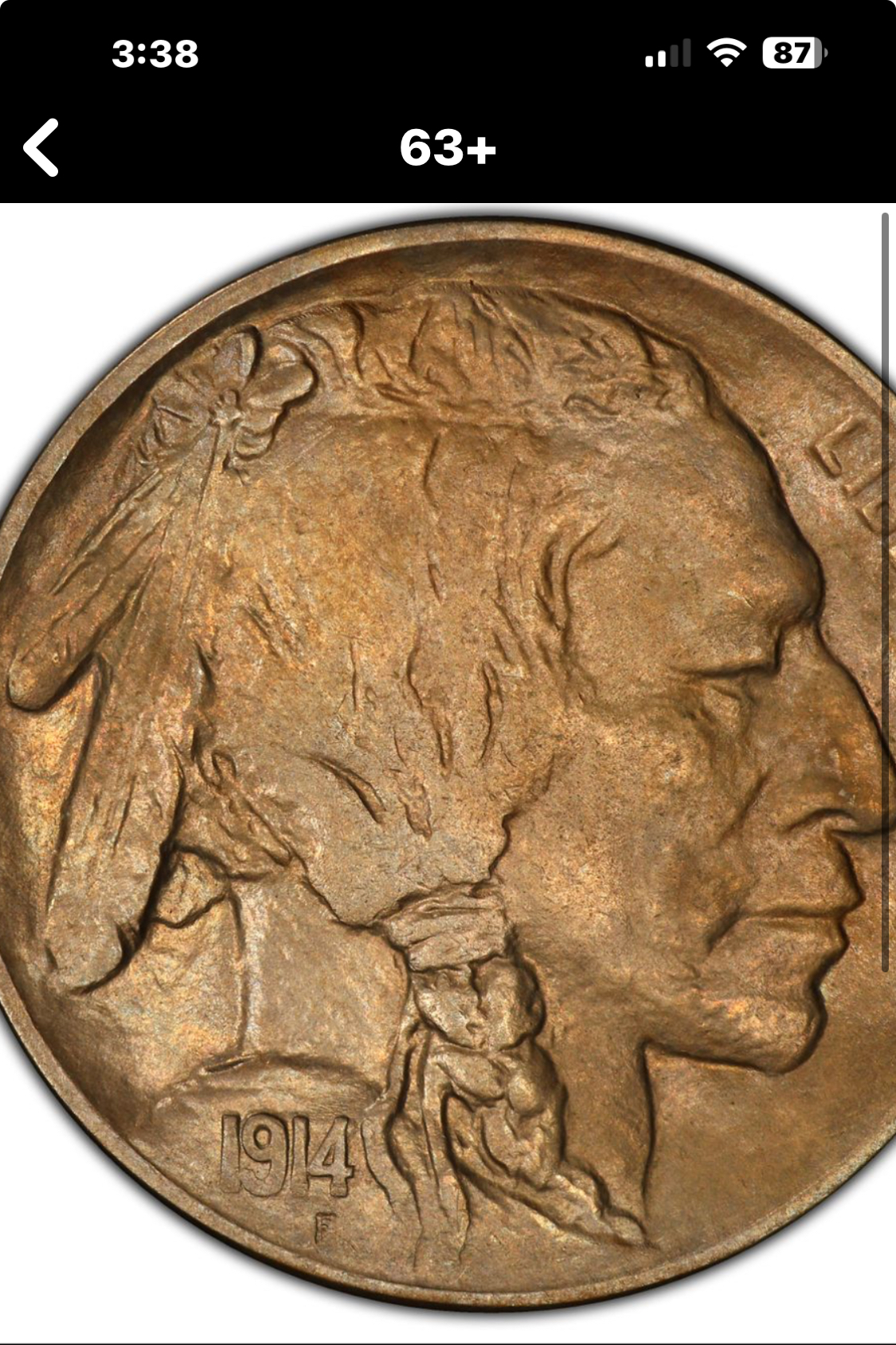
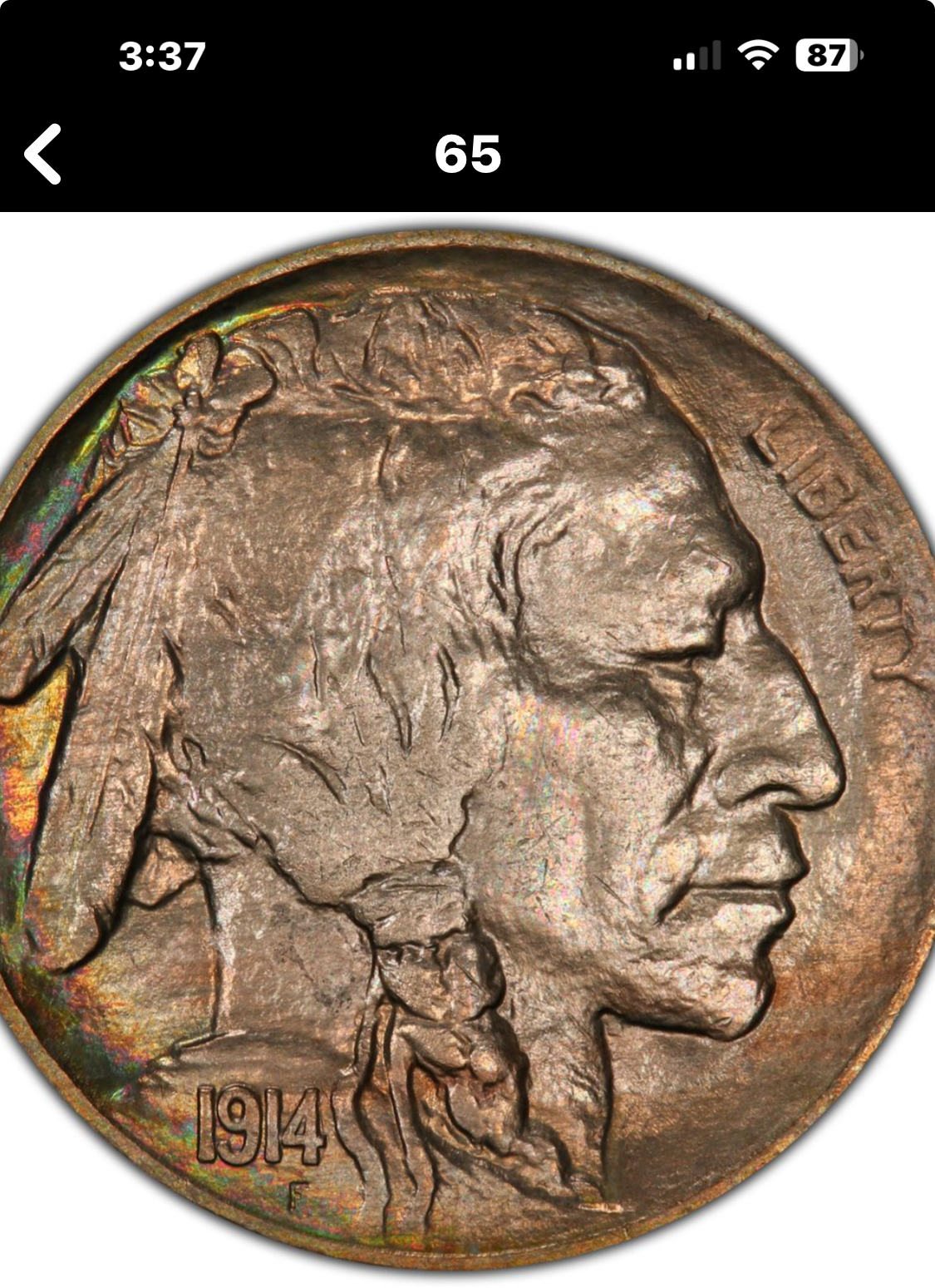
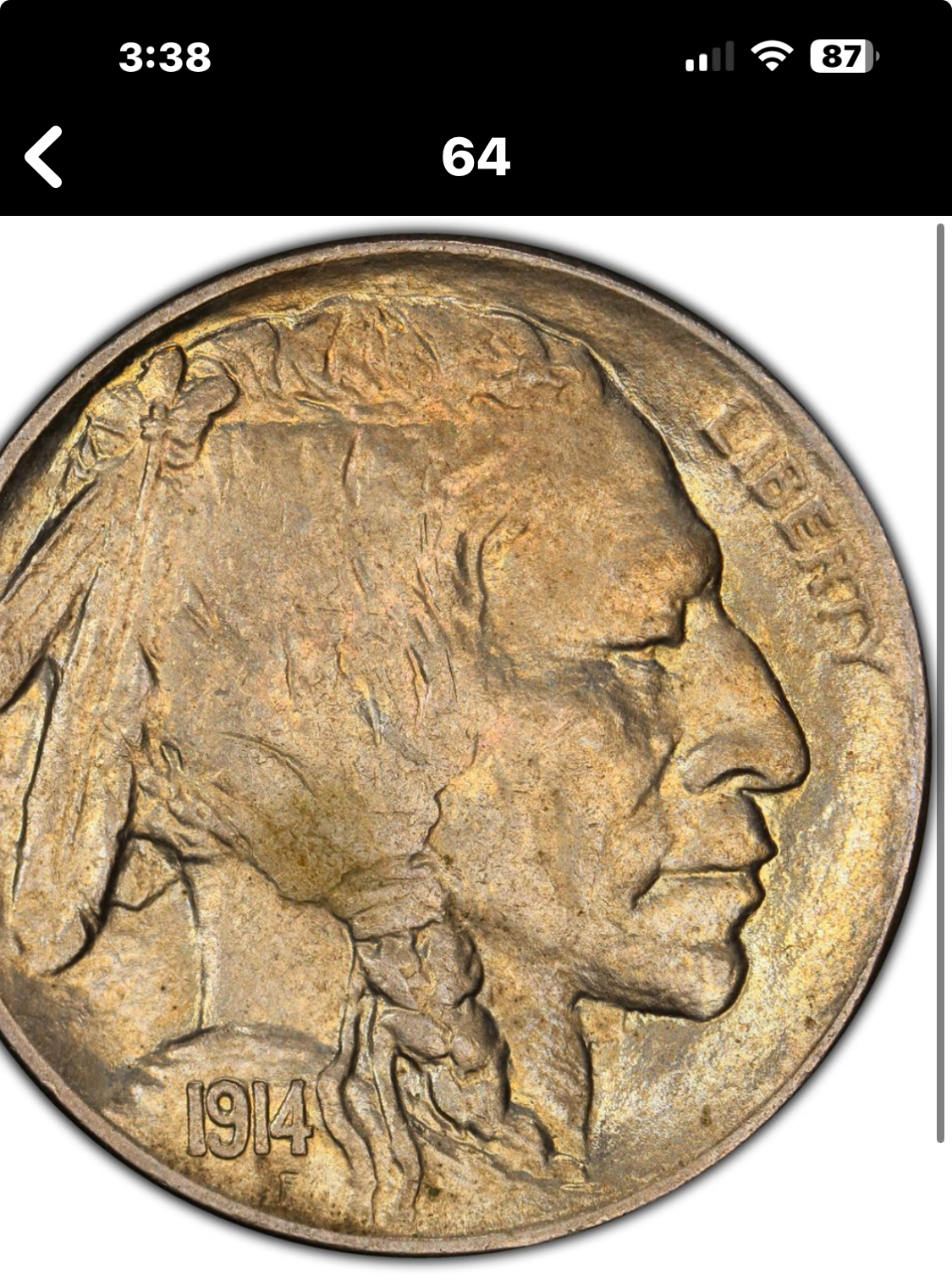
https://www.autismforums.com/media/albums/acrylic-colors-by-rocco.291/
That does appear to be one of the 1914/3 varieties.